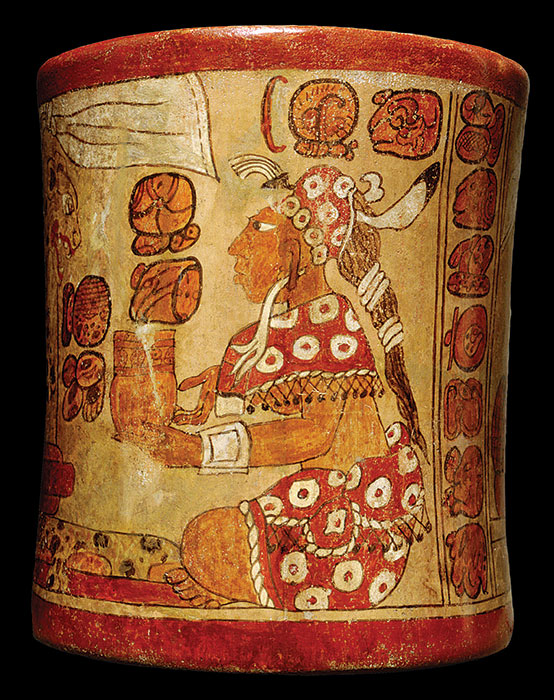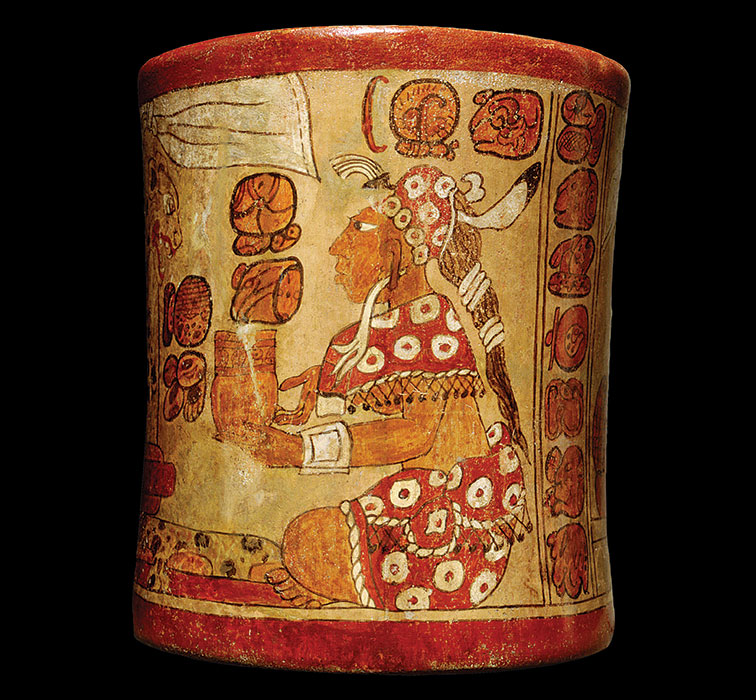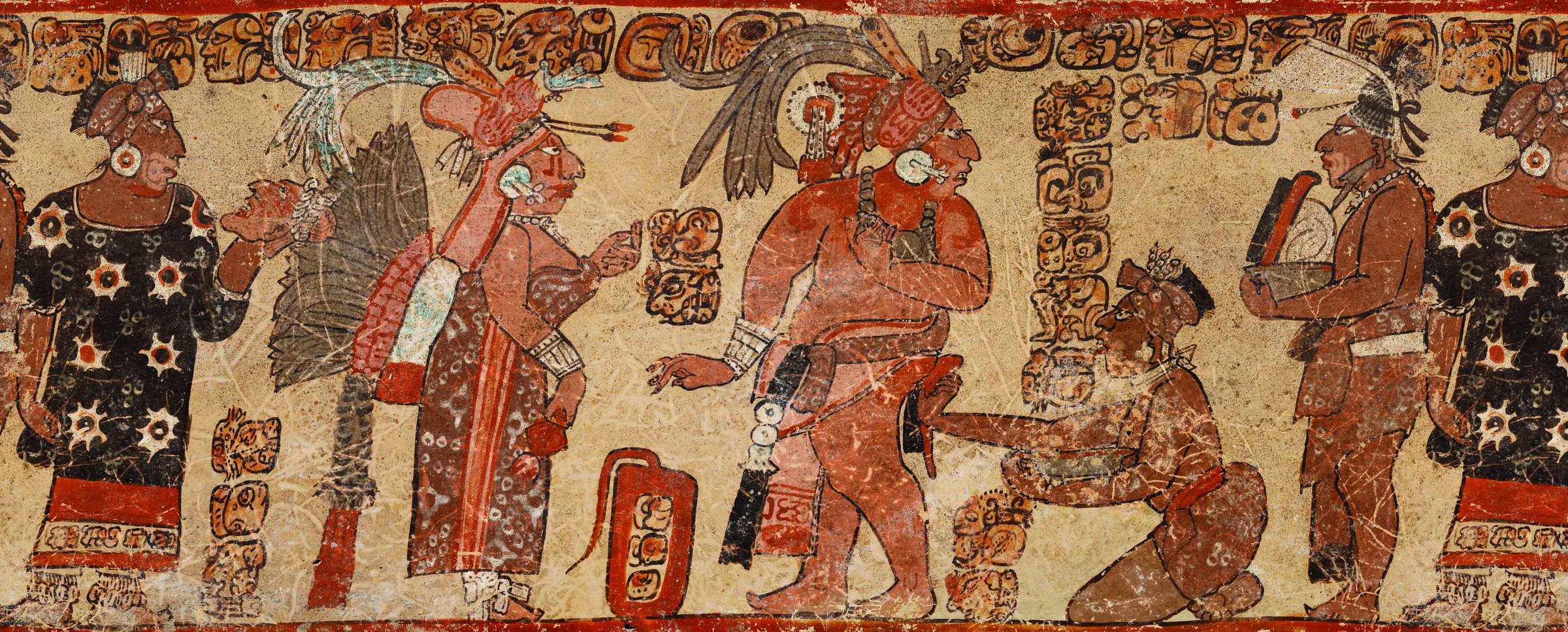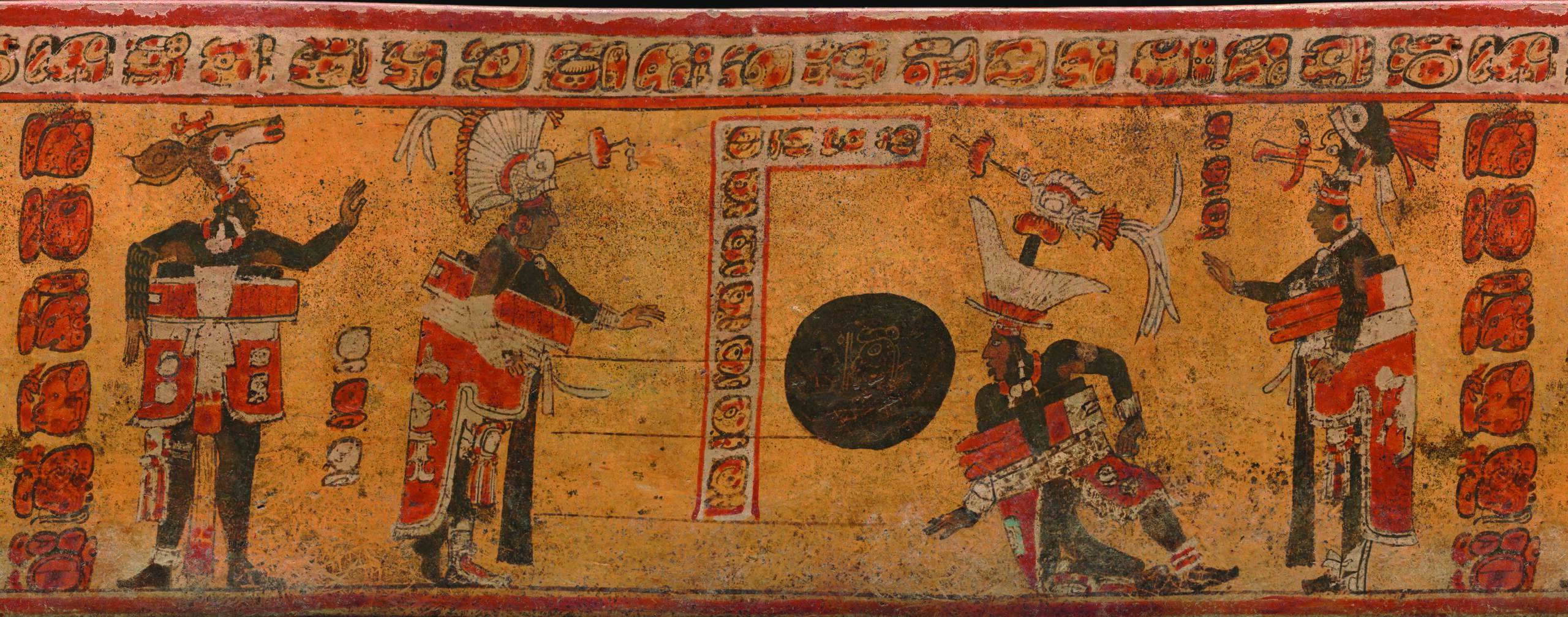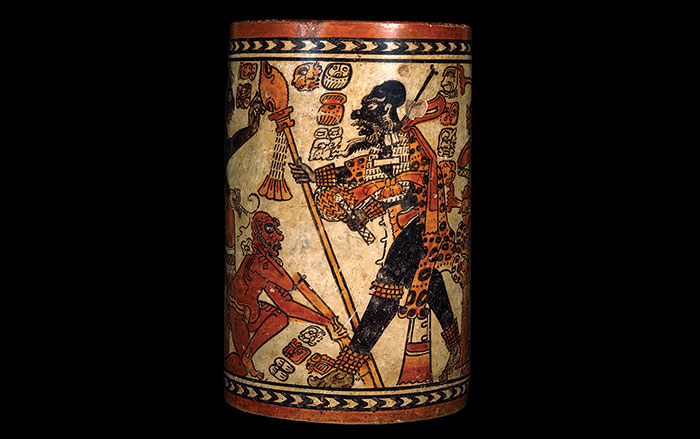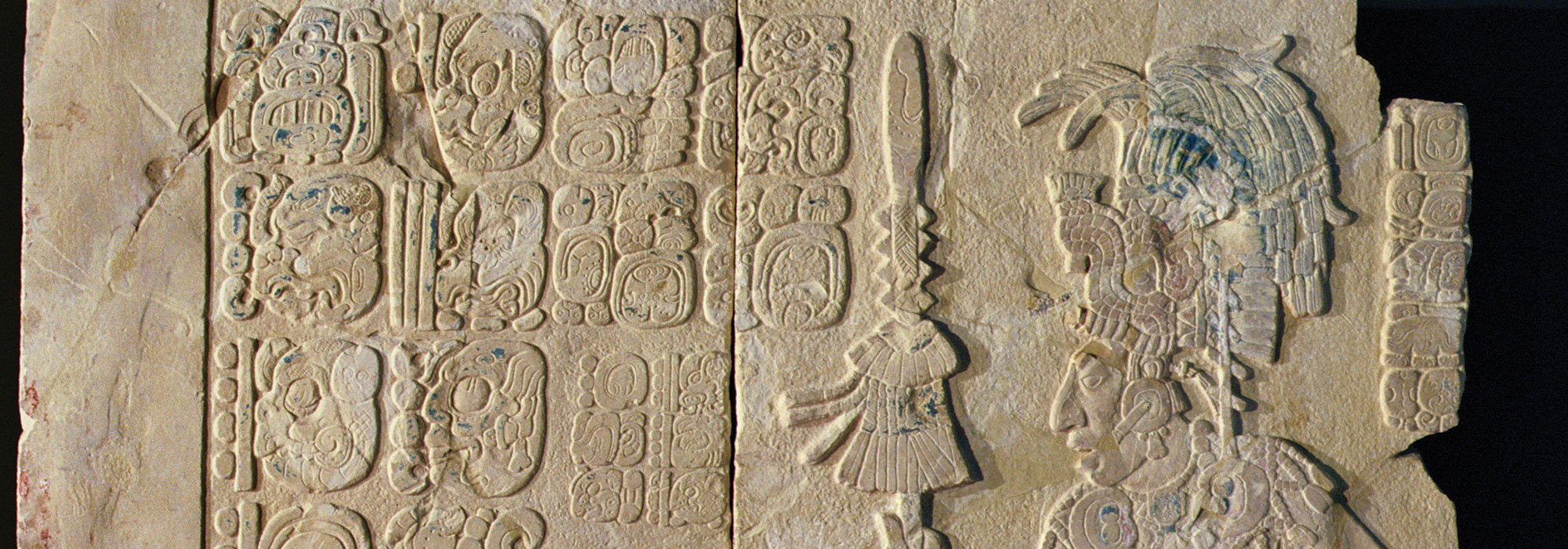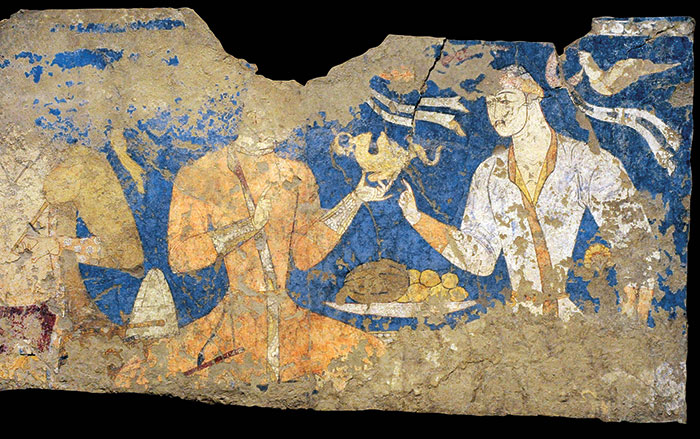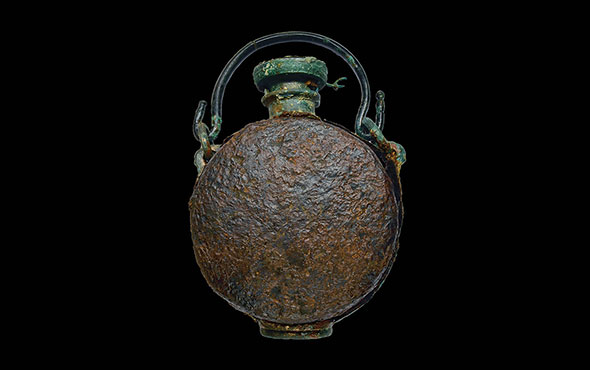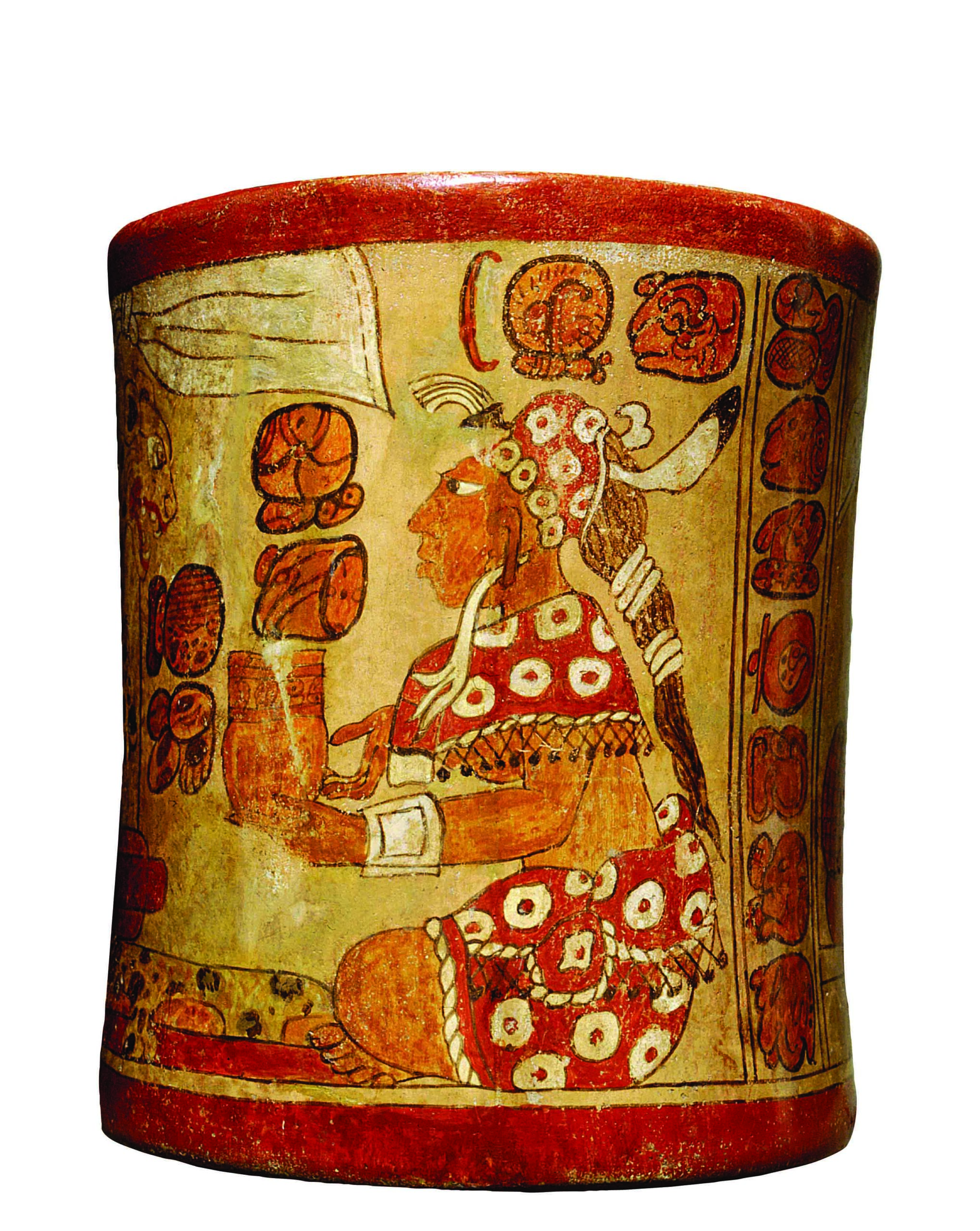
Many different types of earrings were worn by members of Maya society, but a particular style made from bark paper exemplifies how jewelry could be used to perform distinctly uncomfortable social roles and responsibilities. Paper for these earrings was made from the bark of mulberry or fig tree branches. One end of a long strip of the plain bark paper was used to pierce the earlobe, and the strip would then be worn hanging from the ear as a gesture of penance. “These paper ornaments were almost the Classic Maya equivalent of sackcloth and ashes,” says Harvard University archaeologist Nicholas Carter. When elite members of Maya society wore earrings of this style, they did so as a voluntary act. Captives with no choice had their earrings replaced with paper ones as a form of abasement in preparation for being sacrificed. In both cases, the earrings would have been rough and uncomfortable to the wearer. The bark paper used in the earrings was also employed in bloodletting rites carried out on important days of the calendar. For these ceremonies, elite Maya men and women pierced themselves with obsidian lancets and worked stingray spines into the wounds. Their blood would then flow onto strips of paper that would later be burned as offerings.


